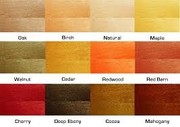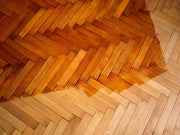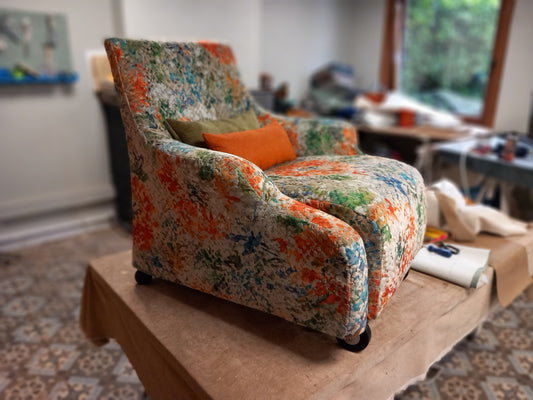Ok, you have a new chair, you took it apart and you have sanded all the wood. What now? There are many options, so let’s make a little overview.
Sometimes, it can be a bit of a shame to paint over beautiful wood. Hey, I am not a wood purist, but there is no point in making a wonderful natural product look like plastic. I always choose to stain the wood, because it keeps the nice wood grain. But I am already ahead of things.
 |
Stain A stain alters the colour of the wood, by penetrating into the grain. It means you can still see the pattern of the wood. They can usually be found in the traditional wood colours (dark oak, cherry, etc). The disadvantage of staining is that it doesn’t protect the wood. The wood is still prone to discoloring from the sun, or stains from water. |
 |
How to stain The wood also has to be completely “naked”, there cannot be any old paint or stain left. When you have sanded everything, take a damp cloth with warm water ans whipe it over the wood. This makes sure that the fibers of the wood are open. Next, dip an old rag in the stain and rub the wood with it. You can also choose to work with a pencil, but I find that you have to follow with a rag anyway. Repeat until you have the desired colour, as every time the shade gets a bit darker. |
 |
Varnish Varnish can be mat or shiny, and can be put on top of a stain. After you have stained the wood, you can finish with a clear varnish to protect the wood. A varnish can also be coloured. In that case, you have the colour and the protection in one go. It's a lot easier, but i always choose the more complicated solution of stain ánd paint, because I believe that the outcome is a lot more natural. |
|
|
How to varnish
Dip your paint brush in the liquid and paint. It’s not rocket science.

